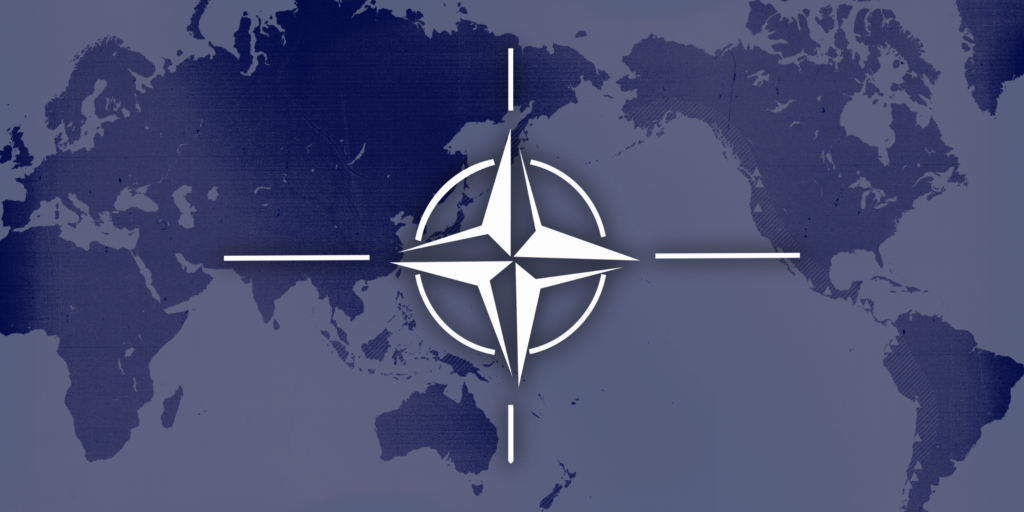What does the latest summit in Washington tell us about NATO’s ambitions in the Indo-Pacific?
Between July 9 and 11, the 75th NATO Summit was held in Washington, D.C., with most of the attention on the ongoing war in Ukraine. Another significant topic that garnered attention was the Indo-Pacific and NATO’s evolving role in the region, reflecting a broader recognition of the Indo-Pacific’s strategic importance for the United States and the whole alliance. As geopolitical tensions rise, particularly concerns over China’s growing influence and assertiveness, NATO’s presence in the Indo-Pacific could be critical in maintaining stability and supporting a rules-based international order.
For NATO to effectively contribute to security in the Indo-Pacific, it must first achieve a consensus within the alliance, which would allow the alliance to strategically communicate its intentions and address any concerns. NATO must also clarify that any engagement in the Indo-Pacific is not intended to provoke China but rather to bolster regional stability and cooperation.
Key takeaways
Historically, the Indo-Pacific has not been a central focus for NATO. Instead, it has more typically been viewed as a regional concern for the United States alone. Yet, recent years have seen a shift, with NATO increasingly engaging in the region’s strategic dynamics.
NATO’s European members have started formulating and implementing their own Indo-Pacific strategies. The United Kingdom and France plan to deploy aircraft carriers to the region within the next two to three years within NATO over maritime deployments to the Indo-Pacific, while Germany, Spain, and France will contribute twelve fighter and support aircraft. Additionally, Italy and Germany sent two large naval ships to participate in the US-led Rim of the Pacific (RIMPAC) exercise that was held between June 27 and August 1, during which the joint forces conducted multidomain warfare scenarios including anti-submarine warfare, multiship surface warfare, multinational amphibious landings, and multi-axis defense of the carrier strike group against live forces.
The latest summit in Washington saw NATO representatives engage with key Indo-Pacific allies, including Japan, South Korea, Australia, and New Zealand. Their discussions primarily focused on strengthening cooperation in cyber defense, aligning on shared security interests – such as the situation in Ukraine – countering hybrid threats, and enhancing technological partnerships. These critical areas of cooperation were also emphasized in the summit’s final communiqué.
Also on the agenda was the topic of defense industry development. South Korea expressed a strong interest in collaborating with North American and European companies to co-develop or sell defense technologies and products, signaling a strategic push to enhance its global defense presence. Tokyo also showed interest in this sector, although with a more measured approach than Seoul. Such expanding collaborations between NATO members and Indo-Pacific nations reflect NATO’s increasing recognition of the region’s strategic importance and the need for a coordinated response to shared security challenges.
The Washington summit’s endorsement of the NATO-Indo-Pacific Partnership. The Washington summit’s endorsement of the NATO-Indo-Pacific Partnership, including inaugural military and naval exercises and political dialogue over significant strategic, e.g. China expansionism in the South-China Sea or North Korean nuclear program, issues connected to maintaining security and stability in the Indo-Pacific, carried significant symbolic weight. According to Liselotte Odgaard of the Hudson Institute, the summit sent a clear message to China, Russia, Iran, North Korea, and other authoritarian regimes: the “NATO-Indo-Pacific Partnership” is firmly united in its support for Ukraine amid its conflict with Russia. The summit underscored that a Ukrainian defeat would have severe repercussions for the Indo-Pacific region since a Ukrainian defeat could embolden China, interpreting it as Western weakness and intensifying its territorial ambitions in Taiwan and the South China Sea. It could also diminish US credibility, causing regional allies to question US commitments and potentially recalibrate their defense strategies.
Support for Ukraine is viewed as a critical deterrent against authoritarian regimes that threaten global democratic values. In response, key US allies in the Indo-Pacific, including Japan and South Korea, have ramped up their backing for Kyiv. This move not only strengthens their ties with the West but also bolsters their defense spending, positioning themselves as reliable NATO and US security partners in the face of growing regional threats. South Korean President Yoon Suk-yeol, known for his hawkish stance, was particularly vocal at the summit, condemning the Kremlin’s close ties with North Korea. He emphasized that European and Indo-Pacific security are inextricably linked, reinforcing that regional challenges impact each other.
NATO’s efforts to contain China
Containing China remains a central focus of the NATO-Indo-Pacific Partnership. The United States recognizes the critical importance of its relationships with Indo-Pacific allies in this context. According to Jake Sullivan, the US national security advisor, the connections between the US, Europe, and the Indo-Pacific have never been more crucial or closely intertwined than they are today.
Europe is progressively accepting this strategic reality, and Indo-Pacific partners are aligning their strategies accordingly. Japan, South Korea, and Australia are on track to invest 2% of their GDP in defense–an unprecedented move that the US strongly supports. According to Washington, it alone lacks sufficient capabilities to counter China’s growing regional influence. China currently boasts the largest navy in the world, with 370 ships—80 more than the US Navy. Moreover, the Chinese leadership plans to expand its naval fleet by 2030. Despite this, the US maintains a significant advantage in combat experience, an area where China is still developing. The US Navy currently maintains an edge in destroyers, with its 73 destroyers enabling superior sea control and power projection compared to China’s 42 guided missile and vertical launch systems, with about 9,900 spread across its surface combatants and submarines, compared to the PLAN’s 4,200. This advantage allows the US to deliver more missiles in a single salvo, enhancing its overall combat power.
The latest NATO summit also saw criticism directed at China, particularly over its role in Moscow’s military campaign against Ukraine. The alliance condemned China as a “decisive factor” in supporting Russia’s war efforts and called for Beijing to cease delivery of all weapons, components, and other critical technological parts essential for Russia’s war efforts. While China does not directly supply Russia with finished weapons, it does provide crucial components that enable Russia to manufacture them. This indirect support has raised significant concerns among NATO members about China’s influence on the conflict.
China has accused NATO of Cold War-era hostility and provocation. Beijing’s response to the upcoming NATO summit in Washington was marked by a significant move: expressing interest in participating in the Eagle Assault 2024 military exercise with Belarus, set to take place in the Brest region near the Polish border. Scheduled for 11 months from August, this maneuver sends a clear signal of China’s displeasure with NATO’s increased focus on the Indo-Pacific, underscoring Beijing’s intent to push back against what it perceives as Western encroachment in its sphere of influence. Escalating tensions highlight a classic security dilemma: NATO’s defensive stance and increased cooperation with Indo-Pacific allies are perceived as threats by China, prompting retaliatory actions. The alliance’s rhetoric and policies might inadvertently exacerbate the situation, potentially increasing the chances of conflict rather than reducing them. While NATO aims to address security concerns, its actions may unintentionally heighten tensions with Beijing and complicate the geopolitical landscape.
NATO liaison office in Tokyo?
Ahead of the summit in Washington, there was considerable speculation about whether NATO representatives would announce plans to open a NATO liaison office in Tokyo. However, the final communiqué did not address this issue. Instead, it confirmed that NATO would establish a NATO liaison office in Amman, Jordan. Swedish Foreign Minister Tobias Billström had previously suggested the possibility of a permanent NATO presence in Asia, arguing that such an office would demonstrate the alliance’s commitment to addressing regional issues and facilitating more profound engagement with Asian partners. In an interview, Billström emphasized that a NATO liaison office in Asia would not provoke China, as it would function as a political office rather than a military headquarters.
Discussions about establishing a NATO liaison office in Tokyo have been ongoing since then-Japanese Prime Minister Shinzō Abe visited NATO headquarters in Belgium in 2007. However, the idea resurfaced prominently during the Vilnius Summit in 2023. The Vilnius summit highlighted NATO’s commitment to strengthening ties with key allies in the Indo-Pacific region. Despite this unity, NATO member states could not reach a consensus over a Tokyo office.
France’s vocal opposition to a NATO office in the Japanese capital caused some controversy. French officials argued that no NATO liaison office exists in any country in the Indo-Pacific region and that NATO could instead rely on designated embassies for situational awareness. In June 2023, Emmanuel Macron, the French president, argued: “If… we push NATO to enlarge the spectrum and the geography, we will make a big mistake.” This stance sparked further debate, illustrating the complexities of NATO’s strategic decisions. The future of establishing a liaison office in Tokyo will depend on how NATO navigates its internal deliberations and aligns its strategic priorities in the evolving geopolitical landscape.
Does NATO have a future in the Indo-Pacific?
Proponents, such as Luis Simón from Vrije Universiteit Brussel, of NATO deepening its engagement in the Indo-Pacific argue that it should do so to address the interconnected nature of global strategic dynamics, including the war in Ukraine, the Sino-Russian partnership, and nuclear threats from North Korea and Iran. They suggest that NATO and its Indo-Pacific partners can leverage their strategic cohesion around US military power to develop a robust cross-theater deterrence strategy. By harmonizing operational concepts, doctrines, and capabilities across regions, NATO and its Indo-Pacific partners can better counter threats from great power revisionists. As such, shifting global power dynamics mean NATO must reevaluate its traditional Europe-focused role and strategies.
Conversely, skeptics, such as Emma Ashford from the Stimson Center, argue that NATO should focus on its core geographical area—the territories of its member states—and prioritize its own strategic priorities before expanding further afield. This viewpoint stems from several considerations. First, NATO has encountered difficulties in the past when it ventured outside its traditional area of responsibility. Its missions in Afghanistan and Libya are often cited as examples of overreach. Second, NATO is fundamentally a defensive alliance and should not stretch its resources and focus beyond its established scope. Third, given the significant geopolitical challenges in the Indo-Pacific, NATO needs to become an alliance of equals, with Europeans providing defense for their own continent, freeing up the United States to worry about the Indo-Pacific.
Conclusion: NATO’s need for a coordinated effort
In the current geopolitical climate, it seems inefficient for NATO to address every issue everywhere. A more effective approach might involve having the North American members of NATO (US and Canada) focus primarily on the Indo-Pacific. However, Canada’s commitment to defense spending raises concerns, as the Canadian government has indicated that it will not meet the 2% defense spending target until 2032. Meanwhile, NATO members should concentrate on addressing the security challenges in Europe, a responsibility they have traditionally handled for the past 75 years. For this strategy to succeed, European NATO countries must consistently increase their defense budgets over the next two decades. The recent underfunding of European militaries has already had significant repercussions, underscoring the need for sustained investment to ensure effective defense and security.
As the Council on Foreign Relations points out, NATO can play a significant role in enhancing security in the Indo-Pacific by partnering with regional countries. These partnerships can involve sharing best practices and lessons learned from combating Russian and Chinese cyber and disinformation operations to countering Chinese economic coercion and exploring increased defense-industrial cooperation. By staying true to its core values and objectives, NATO can effectively contribute to security in the Indo-Pacific. However, NATO must navigate potential Chinese criticism, as Beijing may use deeper NATO-Indo-Pacific ties to portray the alliance as being a source of regional conflict. Indeed, in April 2024, Chinese media accused NATO of exacerbating tensions beyond its traditional scope, suggesting that NATO’s presence could lead to conflict. To counter this narrative, NATO should emphasize that it does not plan to expand the alliance into the Indo-Pacific formally. Additionally, NATO’s Secretary-General should regularly engage with senior Chinese officials to address concerns and clarify the alliance’s regional intentions and activities.







